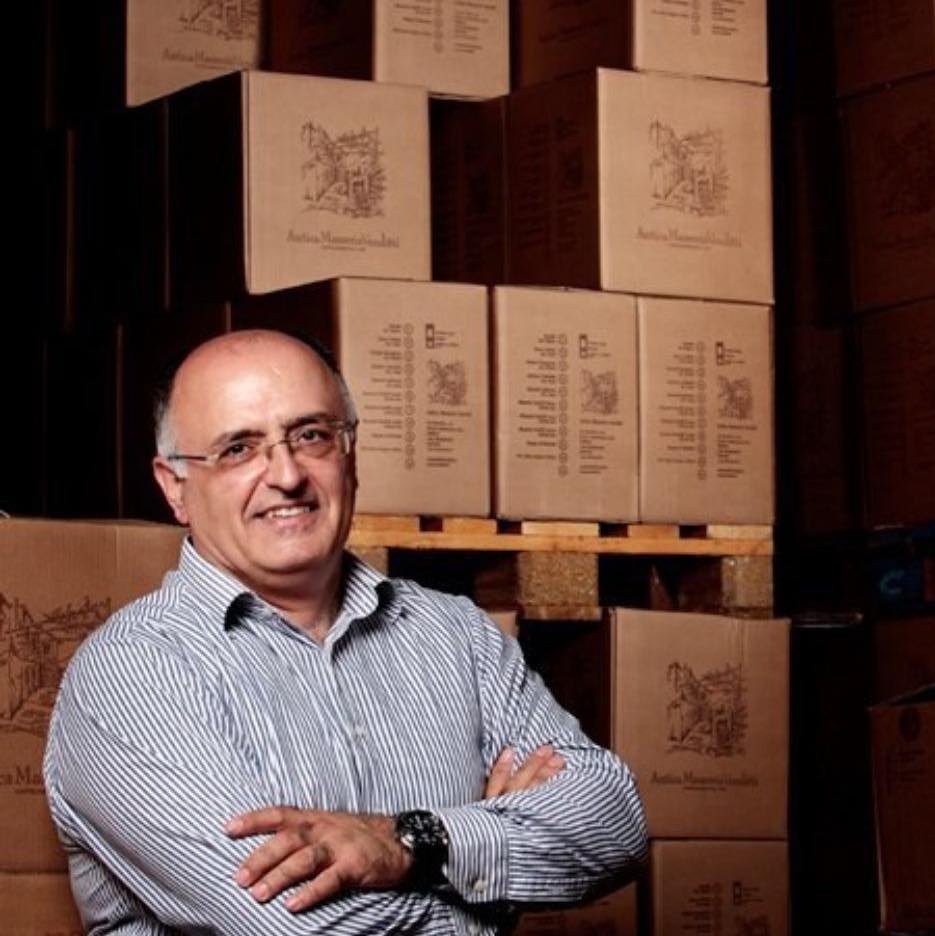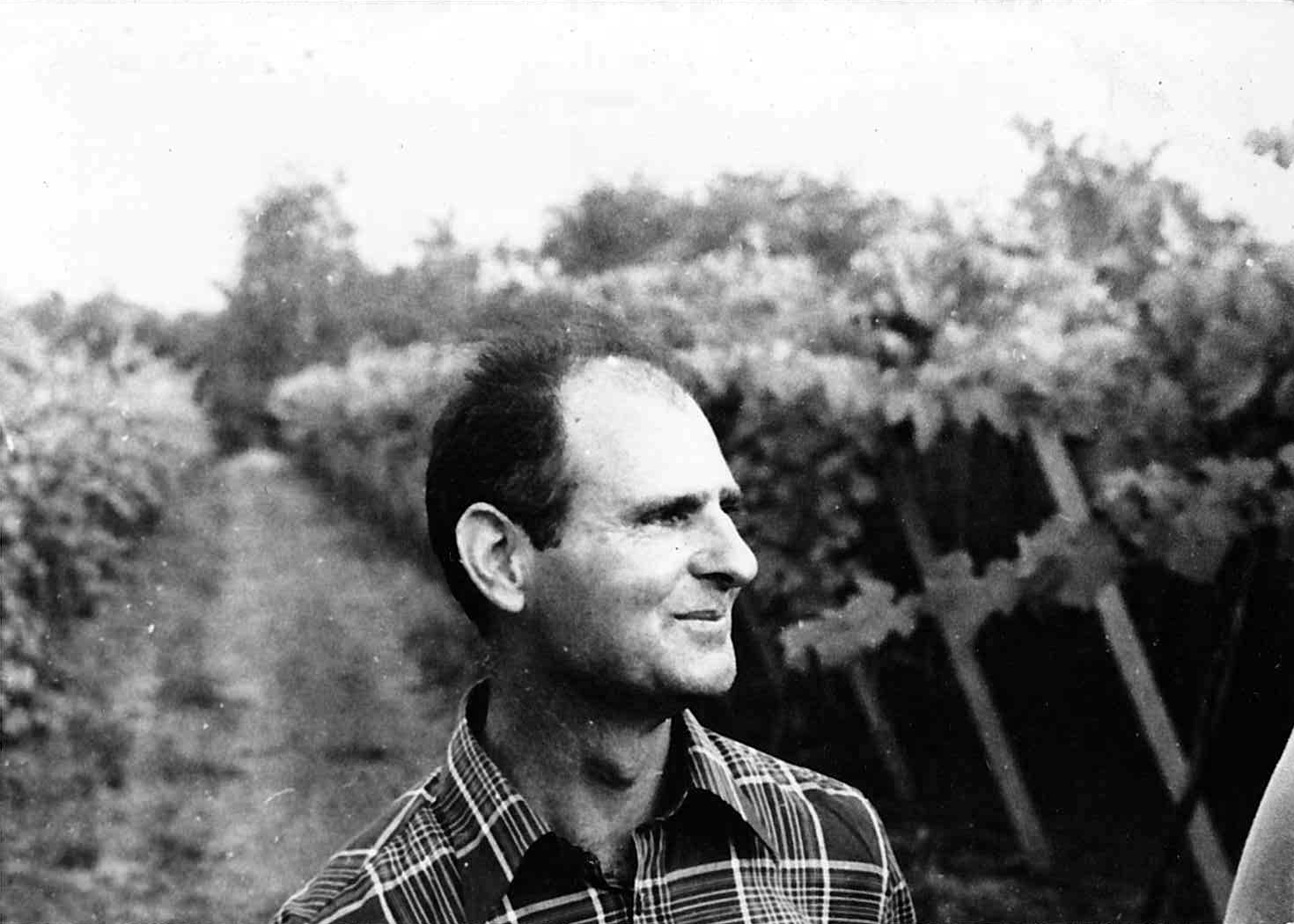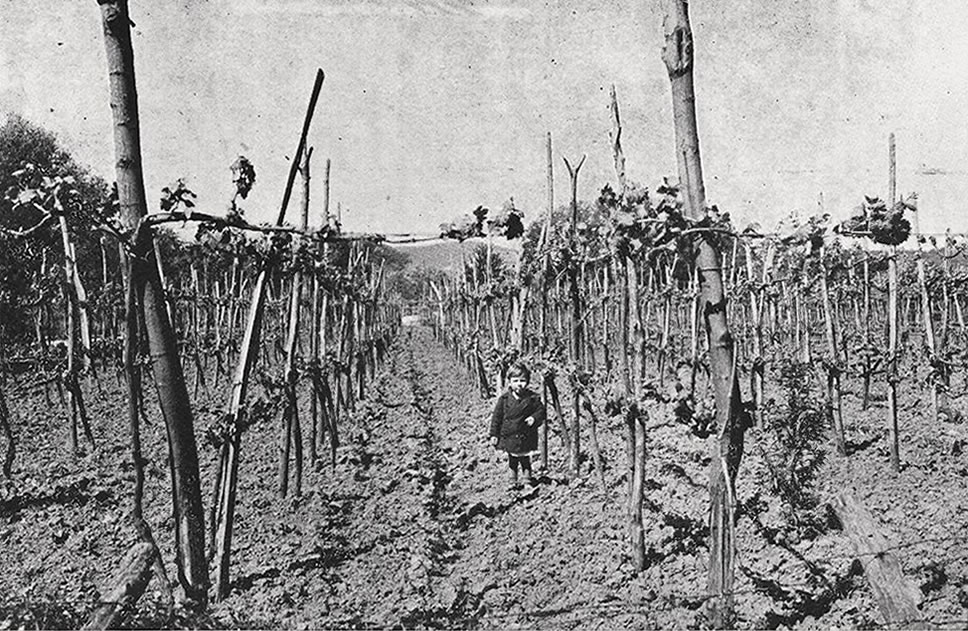I – INFORMATIVA PRIVACY E COOKIE POLICY
In questa sezione sono contenute le informazioni relative al trattamento dei dati personali degli utenti del sito web www.venditti.it ai sensi dell’art.13 del Regolamento UE 679/20162. La presente informativa è stata redatta ai sensi dell’articolo 13 e 14 del Regolamento UE n. 2016/679, relativo alla protezione delle persone fisiche con riguardo al trattamento dei dati personali nonché alla libera circolazione di tali dati, per i soggetti che interagiscono con Antica Masseria Venditti ed è raggiungibile all’indirizzo corrispondente alla pagina iniziale: www.venditti.it3. L’informativa è resa solo per Venditti.it e non anche per altri siti web eventualmente consultati dall’utente tramite link in esso contenuti.4. Scopo del presente documento è fornire indicazioni circa le modalità, i tempi e la natura delle informazioni che il titolare del trattamento deve fornire agli utenti al momento della connessione alle pagine web di Antica Masseria Venditti, indipendentemente dagli scopi del collegamento stesso, secondo la legislazione Italiana ed Europea.5. L’informativa può subire modifiche a causa dell’introduzione di nuove norme al riguardo, si invita pertanto l’utente a controllare periodicamente la presente pagina.6. Se l’utente ha meno di 14 anni, ai sensi dell’art.2-quinquies comma 1 del D.Lgs 101/2018 in attuazione dell’art.8, c.1 regolamento UE 2016/679, dovrà legittimare il suo consenso attraverso l’autorizzazione dei genitori o di chi ne fa le veci.
II – TRATTAMENTO DEI DATI 1 – Titolare dei Dati
Il Titolare del trattamento è la persona fisica o giuridica, l’autorità pubblica, il servizio o altro organismo che, singolarmente o insieme ad altri, determina le finalità e i mezzi del trattamento di dati personali. Si occupa anche dei profili sulla sicurezza.
Relativamente al presente sito web il Titolare del trattamento è: Antica Masseria Venditti, con sede legale in Via Sannitica 120, Castelvenere BN; il Titolare si impegna costantemente per tutelare la privacy on-line dei suoi utenti e per ogni chiarimento o esercizio dei diritti gli stessi potranno contattarlo al seguente indirizzo mail: info@venditti.it
Invitiamo prima di comunicare qualsiasi dato personale al Titolare, a leggere con attenzione la presente informativa perché contiene informazioni importanti sulla tutela dei dati personali.
2 – Luogo trattamento dati
Il trattamento dei dati generato dall’utilizzo di www.venditti.it avviene presso la sede sita in Via Sannitica 120, Castelvenere BN.
III – DATI PERSONALI OGGETTO DEL TRATTAMENTO I dati personali richiesti sono suddivisi in due categorie: obbligatori e facoltativi. Dati obbligatori: Nome, Telefono, Comune di residenza, Email, Dati Azienda. Il conferimento dei dati obbligatori è strettamente funzionale all’esecuzione dei servizi richiesti dall’utente. Dati facoltativi: Partita IVA*, Codice fiscale*, SDI*, PEC*
* Obbligatori in caso di acquisto di prodotti/servizi. I dati facoltativi possono esser forniti a discrezione dell’utente e sono utilizzati da Antica Masseria Venditti al fine di offrire un servizio migliore.
1 – ALTRE CATEGORIE DI DATI TRATTATI
Come tutti i siti web anche il presente sito fa uso di log files nei quali vengono conservate informazioni raccolte in maniera automatizzata durante le visite degli utenti. Le informazioni raccolte sono le seguenti:– indirizzo internet protocol (IP);– tipo di browser e parametri del dispositivo usato per connettersi al sito;– nome dell’internet service provider (ISP);– data e orario di visita;– pagina web di provenienza del visitatore (referral) e di uscita;– eventualmente il numero di click.
BASE GIURIDICA DEL TRATTAMENTO
Le suddette informazioni sono trattate in forma automatizzata e raccolte in forma esclusivamente aggregata al fine di verificare il corretto funzionamento del sito, e per motivi di sicurezza. Tali informazioni saranno trattate in base ai legittimi interessi del titolare.2. A fini di sicurezza (antivirus,filtri antispam, firewall, rilevazione virus), i dati registrati automaticamente sono utilizzati, conformemente alle leggi vigenti in materia, al fine di bloccare tentativi di danneggiamento al sito medesimo o di recare danno ad altri utenti, o comunque attività dannose o costituenti reato. Tali dati solo a fini di tutela del sito e dei suoi utenti, tali informazioni saranno trattate in base ai legittimi interessi del titolare.3. La Antica Masseria Venditti tratta i dati facoltativi degli utenti in base al consenso. Con l’uso o la consultazione del presente sito i visitatori e gli utenti approvano esplicitamente la presente privacy policy e acconsentono all’uso dei loro dati personali in relazione alle modalità e alle finalità di seguito descritte.
Le informazioni che gli utenti del sito riterranno di rendere pubbliche tramite i servizi e gli strumenti messi a disposizione degli stessi, sono fornite dall’utente consapevolmente e volontariamente, esentando il presente sito da qualsiasi responsabilità in merito ad eventuali violazioni delle leggi. Spetta all’utente verificare di avere i permessi per l’immissione di dati personali di terzi o di contenuti tutelati dalle norme nazionali ed internazionali.
V – FINALITA’ EL TRATTAMENTO DATI
I dati raccolti dal sito durante il suo funzionamento forniti direttamente dall’interessato e/o raccolti attraverso la compilazione di form per contattare il Titolare online o offline o qualsiasi altra informazione che possa essere attribuita direttamente o indirettamente all’interessato e che potranno essere forniti dallo stesso attraverso la procedura di registrazione tramite form online sono raccolti e trattati esclusivamente per le seguenti finalità:
- consentire la navigazione del Sito e l’erogazione dei servizi ivi messi a diposizione dal Titolare;
- per rispondere alle richieste, nonché degli eventuali altri dati personali inseriti nella missiva.
- per l’esecuzione del contratto, nel caso di stipula di un contratto tra Antica Masseria Venditti e la controparte.
Per attività amministrative, la gestione dei pagamenti e per l’adempimento di obblighi di legge quali ad esempio quelli di natura contabile, fiscale.
ai fini di svolgere attività di profilazione, tramite raccolta e analisi delle informazioni sulle selezioni e le scelte effettuate all’interno del sito
adempiere ad eventuali obblighi previsti dalle leggi vigenti, da regolamenti o dalla normativa comunitaria, o per dar corso a richieste dell’autorità giudiziaria
VI.PERIODO DI CONSERVAZIONE
I dati obbligatori ai fini contrattuali e contabili sono conservati per il tempo necessario allo svolgimento del rapporto commerciale e contabile e comunque non oltre per un arco temporale non superiore al conseguimento delle finalità per le quali i dati sono stati raccolti
I dati di chi non acquista o usufruisce dei prodotti pur avendo avuto un precedente contatto con la società saranno immediatamente cancellati o trattati in forma anonima, ove la loro conservazione non risulti altrimenti giustificata, salvo che sia stato acquisito validamente il consenso informato degli interessati relativo ad una successiva attività di promozione commerciale o ricerca di mercato.
I dati utilizzati a fini di sicurezza (blocco tentativi di danneggiamento del sito) sono conservati per il tempo strettamente necessario al raggiungimento del fine anteriormente indicato.
In ogni caso i dati rilevati dal sito non saranno forniti a terzi o trasferiti in altri paesi compresi quelli non appartenenti allo Spazio Economico Europeo per nessuna ragione, a meno che non si tratti di legittima richiesta da parte dell’autorità giudiziaria e nei soli casi previsti dalla legge.
VII. SICUREZZA DATI FORNITI
I trattamenti effettuati dal presente sito saranno improntati ai principi di leicità, correttezza, trasparenza, limitazione delle finalità e della conservazione, minimizzazione dei dati, esattezza, integrità e riservatezza, nonchè al principio di responsabilizzazione di cui all’art.5 del Regolamento, adottando le opportune misure di sicurezza tecniche,informatiche,organizzative,logistiche e procedurali, volte ad impedire accessi non autorizzati,trattamenti non consentiti, divulgazione, modifica o distruzione non autorizzata e anche accidentale dei dati. Il trattamento viene effettuato mediante strumenti informatici con modalità organizzative e con logiche strettamente correlate alle finalità indicate.Tali misure sono aggiornate periodicamente in base al progresso tecnico, alla natura dei dati e alle specifiche caratteristiche del trattamento, controllate costantemente e verificate nel tempo. Dette misure di sicurezza corrispondono ai requisiti che, il Titolare del trattamento ha individuato come adeguati. Vengono condotte attività periodiche di verifica circa l’aderenza ai protocolli di sicurezza adottati e vengono introdotte o aggiornate, se necessario, nuove misure di sicurezza a seguito di cambiamenti organizzativi ed innovazioni tecnologiche o cambiamenti nella tipologia di dati raccolti. Le misure di sicurezza sono costantemente controllate e periodicamente verificate.
VIII. SOGGETTI AUTORIZZTI AL TRATTAMENTO
Oltre al titolare, in alcuni casi, potrebbero avere accesso ai dati categorie di incaricati secondo specifiche istruzioni impartite nel rispetto della normativa vigente e coinvolti nell’organizzazione del sito, quali:
- personale amministrativo,commerciale,marketing,legali, amministratori di sistema,consulenti tecnici
- ovvero soggetti esterni opportunamente nominati Responsabile esterno del trattamento quali:
- fornitori di servizi tecnici terzi, hosting provider, società informatiche, persone, società, associazioni o studi professionali che prestino attività di assistenza e consulenza alla nostra società, soggetti terzi fornitori di contenuti e servizi a valore aggiunto richiesti dall’end-user, autorità pubbliche, al ricorrere dei presupposti
IX – COOKIES POLICY La nostra Cookie Policy ha l’intento di descrivere le tipologie di cookie utilizzati dal sito web , le finalità dei cookie installati e le modalità con cui l’Utente può selezionare o deselezionare i cookie presenti sul Sito e che fruiscono dei servizi proposti. 1 – Tipo di Cookies Un “cookie” è un file di testo salvato nel computer dell’utente nel momento in cui questo accede ad un sito web con lo scopo di fornire informazioni ogni volta che l’utente ritorna sullo stesso sito. È una sorta di promemoria della pagina internet visitata. Con il cookie, il server web invia informazioni al browser dell’utente (Internet Explorer, Mozilla Firefox, Google Chrome, ecc.) memorizzate sul computer di quest’ultimo, e saranno rilette ed aggiornate ogni qual volta l’utente ritornerà sul sito. In questo modo il sito Web può adattarsi automaticamente all'utente. Nel corso della navigazione l’utente potrebbe ricevere sul suo terminale anche cookie di siti diversi (cookies di “terze parti”), impostati direttamente da gestori di detti siti web e utilizzati per le finalità e secondo le modalità da questi definiti.In funzione della loro durata, si distinguono in cookie di sessione (ossia quelli temporanei e cancellati automaticamente dal terminale al termine della sessione di navigazione, chiudendo il browser) ed in cookie persistenti (ossia quelli che restano memorizzati sul terminale fino alla loro scadenza o cancellazione da parte dell’utente). In base alla funzione e alla finalità di utilizzo, i cookie possono suddividersi in:
Cookie di prima parte: sono i cookie proprietari utilizzati dal Sito al fine di consentire all'utente di navigare in modo più efficiente e/o di monitorare le azioni esercitate dallo stesso;
Cookie di terza parte: sono i cookie impostati da un sito diverso da quello che si sta attualmente visitando al fine di consentire all'utente di navigare in modo più efficiente e/o di monitorare le azioni esercitate dallo stesso.
Inoltre, si distinguono diverse tipologie di cookie:
- Cookie Tecnici: sono i cookie relativi ad attività strettamente necessarie al funzionamento e all'erogazione del servizio (es. cookie di sessione per il login), cookie relativi ad attività di salvataggio delle preferenze e ottimizzazione (es. cookie di salvataggio del carrello, etc.), cookie analitici per raccogliere informazioni in forma anonima e aggregata.
- Cookie di Sessione o di Navigazione: sono utilizzati per tenere traccia dell’attività dell’Utente in rete. Garantiscono la normale navigazione e fruizione del Sito, permettendo ad esempio di navigare più rapidamente, di realizzare un acquisto o di autenticarsi per accedere ad aree riservate, e sono di fatto necessari per il suo corretto funzionamento;
- Cookie di Funzionalità: permettono all'utente la navigazione in funzione di una serie di criteri selezionati (ad esempio, la lingua, i prodotti selezionati per l’acquisto, etc.) al fine di migliorare il servizio reso allo stesso;
- Cookie Analitici: utilizzati per raccogliere informazioni sull'utilizzo del Sito. Il Titolare usa tali informazioni per analisi statistiche, per migliorare il Sito e semplificarne l’utilizzo, oltre che per monitorarne il corretto funzionamento. Questo tipo di cookie raccoglie informazioni in forma anonima sull'attività degli Utenti nel Sito e sul modo in cui sono arrivati al Sito e alle pagine visitate. I cookie di questa categoria vengono inviati dal Sito stesso o da domini di terze parti. I cookie analitici possono essere:
- Cookie Analitici di prima parte: assimilati sul piano normativo ai cookie tecnici se utilizzati direttamente dal Titolare del Sito senza effettuare la profilazione dell’Utente ma solo per raccogliere informazioni, in forma aggregata e anonima, sul numero degli Utenti e su come questi visitano il Sito per finalità statistiche e per migliorare le performance del Sito;
- Cookie Analitici di terza parte: sono messi a disposizione da soggetti terzi e vengono assimilati ai cookie tecnici se le terze parti non effettuano la profilazione dell’Utente mediante l’utilizzo di strumenti idonei a ridurre il potere identificativo dei cookie (per esempio, mediante il mascheramento di porzioni significative dell’indirizzo IP) e senza incrociare le informazioni raccolte con altre di cui già dispongono.
Per i cookie tecnici è richiesto il solo rilascio della Cookie Policy senza necessità di richiedere il consenso. La disabilitazione o cancellazione degli stessi, accedendo alle funzioni del proprio browser, potrebbe compromettere l’ottimale navigazione sul presente Sito.
Cookie di Profilazione: sono utilizzati per monitorare la navigazione web dell’Utente e creare un profilo delle sue abitudini:
Cookie di profilazione di prima parte: installati dal Titolare per creare profili relativi all’Utente al fine di inviare messaggi pubblicitari in linea con le preferenze manifestate durante la navigazione in rete. Data la loro particolare invasività nella sfera privata degli utenti, la normativa applicabile richiede che l’Utente, previa adeguata informativa sull’uso degli stessi, debba esprimere il proprio consenso;
Cookie di profilazione di terza parte: usati da soggetti terzi che accedono alle informazioni in chiaro, quindi non in modalità anonima e aggregata, e li incrociano con altri dati già in loro possesso. Il Sito non ha un controllo diretto dei singoli cookie di terze parti. L’Utente è pertanto invitato a verificare sul sito della terza parte l’informativa relativa ai cookie.
L’utilizzo di questi cookie necessita dell’acquisizione del preventivo consenso dell’Utente.
COOKIE INSTALLATI
I cookie presenti su questo Sito sono:
cookie tecnici e analitici necessari per il funzionamento del Sito, per analisi statistiche aggregate, per migliorare e semplificare l’utilizzo del Sito e per salvare le preferenze di navigazione ed ottimizzare l’esperienza di navigazione dell’Utente;
cookie di profilazione di terza parte(Google ads,Google analytics,Facebook) che potrebbero effettuare attività di profilazione e tracciamento dell’Utente anche all'insaputa del Titolare. Per maggiori informazioni si consiglia di consultare con attenzione le privacy policy dei singoli servizi sotto elencati.
DURATA DEI COOKIE
I cookie hanno una durata dettata dalla data di scadenza o da un’azione specifica come la chiusura del browser impostata al momento dell’installazione. I cookie possono essere:
temporanei o di sessione:sono utilizzati per archiviare informazioni temporanee, consentono di collegare le azioni eseguite durante una sessione specifica e vengono rimossi dal computer alla chiusura del browser;
persistenti:sono utilizzati per archiviare informazioni, ad esempio il nome e la password di accesso, in modo da evitare che l’Utente debba digitarli nuovamente ogni volta che visita un sito specifico. Questi rimangono memorizzati nel computer anche dopo aver chiuso il browser.
Resta ferma la possibilità dell’Utente di modificare le scelte prestate in ogni momento.
MANIFESTAZIONE DEL CONSENSO
Per i cookie che richiedono il consenso, alla prima visita del Sito l’Utente visualizza automaticamente un banner, contenente sia il link alla presente informativa completa che la richiesta di manifestazione del consenso all’utilizzo dei cookie.In qualsiasi momento è possibile modificare o revocare il proprio consenso.
COME DISABILITARE I COOKIE
L’Utente può gestire le preferenze relative ai cookie direttamente all’interno del proprio browser ed impedire che terze parti possano installare i cookies.Tramite le preferenze del browser è inoltre possibile eliminare i cookie installati in passato, incluso il cookie in cui è stato eventualmente salvato il consenso all’installazione di cookie da parte di questo Sito. Disabilitando tutti i cookie, il funzionamento di questo Sito potrebbe risultare compromesso.L’Utente può trovare informazioni e esercitare il proprio diritto ad opporsi al tracciamento dei cookie nel suo browser ai seguenti indirizzi:
Internet Explorer: http://windows.microsoft.com/internet-explorer/delete-manage-cookies
Google Chrome: https://support.google.com/chrome/answer/95647
Mozilla Firefox: https://support.mozilla.org/kb/enable-and-disable-cookies-website-preferences
Opera: https://www.opera.com/help/tutorials/security/privacy/
Apple Safari: https://support.apple.com/guide/safari/manage-cookies-and-website-data-sfri11471
Inoltre si può procedere alla cancellazione dei cookie chiedendo l’opt-out direttamente alle terze parti o tramite il sitohttp://www.youronlinechoices.com/, dove è possibile gestire le preferenze di tracciamento della maggior parte degli strumenti pubblicitari.
PLUGIN SOCIAL NETWORK
Il sito incorpora anche plugin e/o bottoni per i social network, al fine di consentire una facile condivisione dei contenuti sui vostri social network preferiti. Tali plugin sono programmati in modo da non impostare alcun cookie all’accesso della pagina, per salvaguardare la privacy degli utenti. Eventualmente i cookie vengono impostati, se così previsto dai social network, solo quando l’utente fa effettivo e volontario uso del plugin. Si tenga presente che se l’utente naviga essendo loggato nel social network allora ha già acconsentito all’uso dei cookie veicolati tramite questo sito al momento dell’iscrizione al social network. La raccolta e l’uso delle informazioni ottenute a mezzo del plugin sono regolati dalle rispettive informative privacy dei social network, alle quali si prega di fare riferimento. Facebook – (link informativa cookie) Instagram – https://it-it.facebook.com/help/instagram/155833707900388
DIRITTI DELL’UTENTE
L’art. 13, c. 2 del Regolamento UE 2016/679 elenca i diritti dell’utente.2. Il sito www.venditti.it intende pertanto informare l’utente sull’esistenza: – del diritto dell’interessato di chiedere al titolare l’accesso ai dati personali (art. 15 Regolamento UE), il loro aggiornamento (art. 7, co. 3, lett. a) D.Lgs. 196/2003), la rettifica (art. 16 Regolamento UE), l’integrazione (art. 7, co. 3, lett. a) D.Lgs. 196/2003) o la limitazione del trattamento che lo riguardino (art. 18 Regolamento UE) o di opporsi, per motivi legittimi, al loro trattamento (art. 21 Regolamento UE), oltre al diritto alla portabilità dei dati (art. 20 Regolamento UE); – del diritto di chiedere la cancellazione (art. 17 Regolamento UE), la trasformazione in forma anonima o il blocco dei dati trattati in violazione di legge, compresi quelli di cui non è necessaria la conservazione in relazione agli scopi per i quali i dati sono stati raccolti o successivamente trattati (art. 7, co. 3, lett. b) D.Lgs. 196/2003); – del diritto di ottenere l’attestazione che le operazioni di aggiornamento, rettificazione, integrazione dei dati, cancellazione, blocco dei dati, trasformazione sono state portate a conoscenza, anche per quanto riguarda il loro contenuto, di coloro ai quali i dati sono stati comunicati o diffusi, eccettuato il caso in cui tale adempimento si rivela impossibile o comporta un impiego di mezzi manifestamente sproporzionato rispetto al diritto tutelato (art. 7, co. 3, lett. c) D.lgs. 196/2003); 3. Le richieste per esercitare i prorpi diritti possono essere indirizzate al titolare del Trattamento, senza formalità o, in alternativa, utilizzando il modello previsto dal Garante per la Protezione dei Dati Personali, o inviando una mail all’indirizzo: info@venditti.it o all'indirizzo pec pec@pec.venditti.it e saranno evase dal Titolare nel più breve tempo possibile, in ogni caso entro 30 giorni. Parimenti, in caso di violazione della normativa, l’utente ha il diritto di proporre reclamo presso il Garante per la Protezione dei Dati Personali, quale autorità preposta al controllo sul trattamento nello Stato Italiano.5. Per una disamina più approfondita dei diritti che Le competono, si vedano gli artt. 15 e ss. del Regolamento UE 2016/679 e l’art. 7 del D.Lgs. 196/2003. MODIFICHE AL PRESENTE DOCUMENTO
Il presente documento, pubblicato all’indirizzo: www.venditti.it/privacy-policy costituisce la privacy policy di questo sito.
Esso può essere soggetto a modifiche o aggiornamenti. Qualora si tratti di modifiche ed aggiornamenti rilevanti questi saranno segnalati con apposite notifiche agli utenti.
Utilizzo di cookie tecnici utili al funzionamento del sito






 Italiano
Italiano